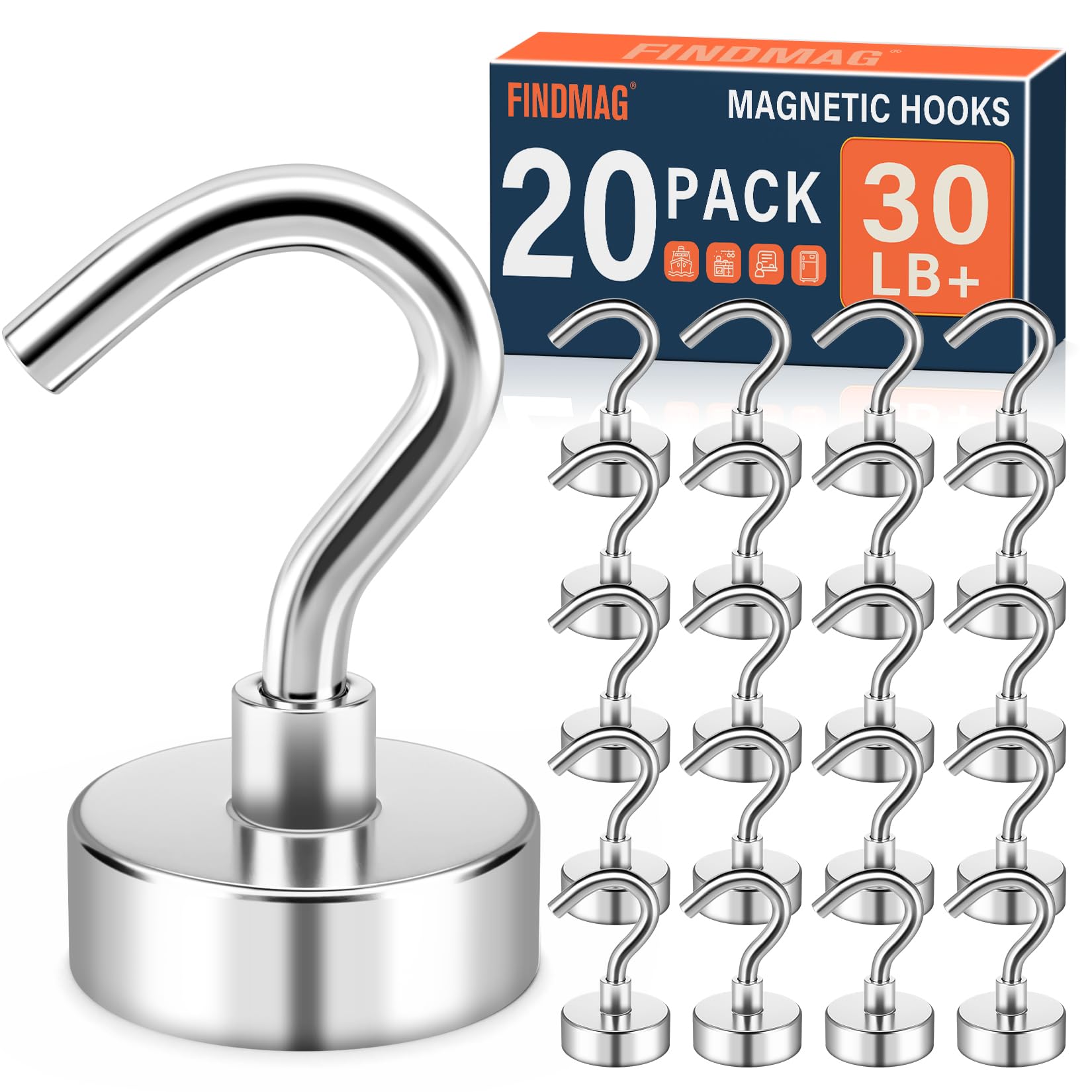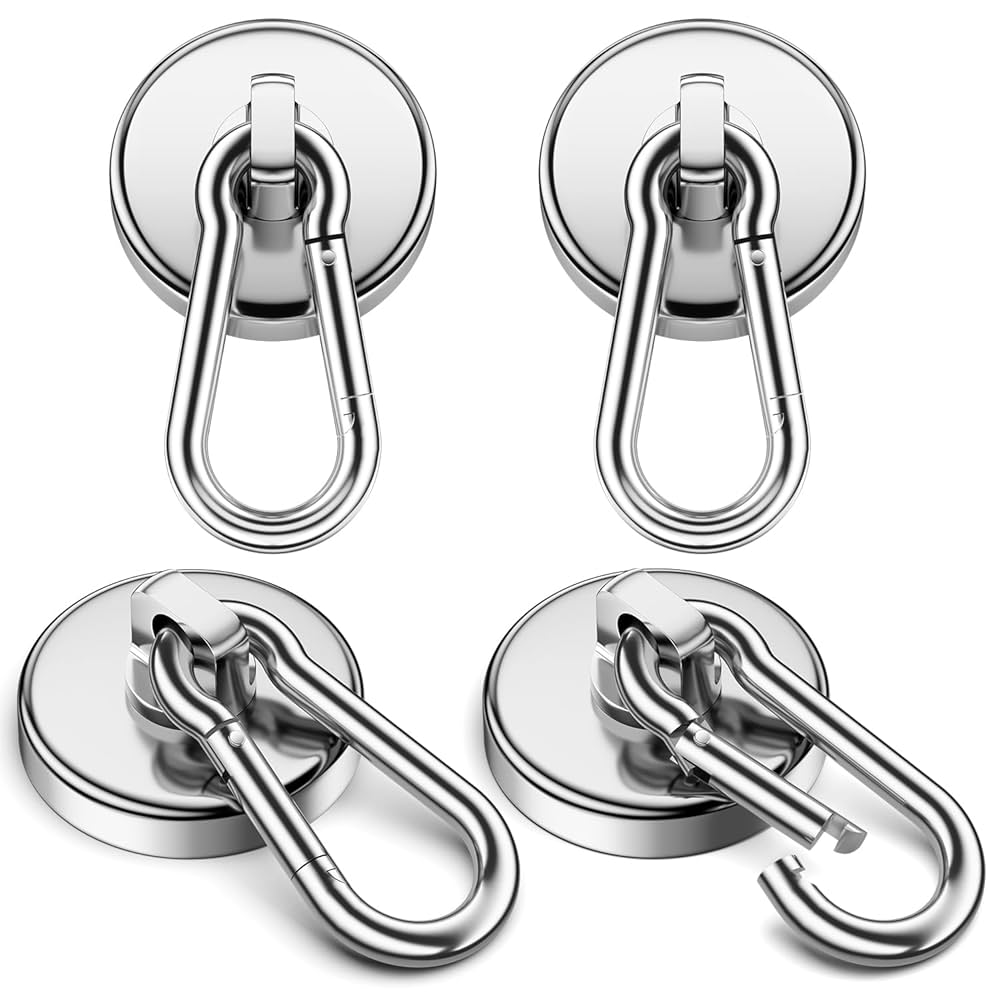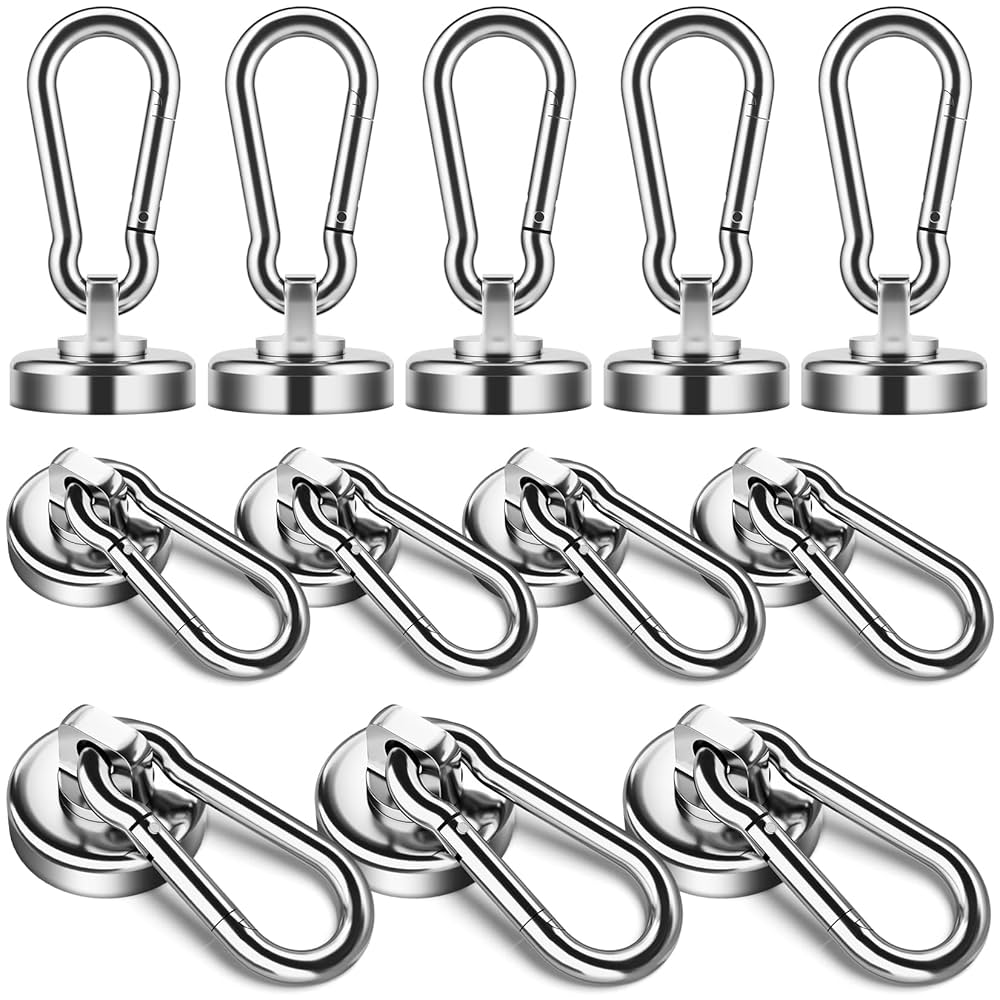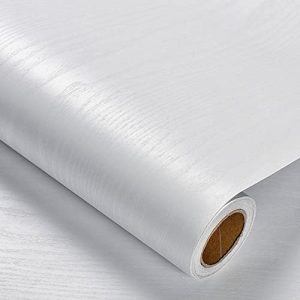Benefits Of Magnetic Hanging Hardware
Magnetic hanging hardware offers several advantages, making it a popular choice for home and office use. It provides a strong hold without damaging walls or surfaces. This hardware is simple to install and remove, saving time and effort. It also works on many different surfaces, giving flexibility in where you hang items.
Strong And Reliable Hold
These magnets create a firm grip that keeps items securely in place. Depending on the magnet size, they can hold various weights. This reliability prevents pictures or decorations from falling unexpectedly. The hold stays consistent over time, ensuring long-lasting support.
Easy Installation And Removal
No tools or drilling are needed for setup. You just place the magnetic hardware on the surface and attach the item. Removing it is equally simple, leaving no holes or marks behind. This makes it ideal for renters or temporary displays.
Versatility Across Surfaces
Magnetic hangers work on metal, wood, glass, and painted walls. They adapt to curved or flat surfaces with ease. This flexibility allows use in kitchens, offices, garages, or classrooms. You can move or rearrange items quickly without damage.
Versatility Across Surfaces
Magnetic hangers work on metal, wood, glass, and some painted walls. They adapt to curved or flat surfaces with ease. This flexibility allows use in kitchens, offices, garages, or classrooms. You can move or rearrange items quickly without damage.

Credit: www.amazon.com
Types Of Magnetic Wall Mounts
Magnetic wall mounts come in various types to suit different needs and surfaces. Each type offers unique features for securely and conveniently hanging items. Understanding these types helps choose the right mount for your space.
Neodymium Magnets
Neodymium magnets are very strong and compact. They hold heavy objects firmly on metal surfaces. These magnets work well for industrial and home use. Their strength makes them ideal for hanging tools or decorations.
Rubber-coated Magnets
Rubber-coated magnets have a protective layer to prevent scratches. The coating also adds grip on smooth surfaces. These magnets are good for delicate walls or painted surfaces. They combine strength with surface protection.
Adhesive-backed Magnets
Adhesive-backed magnets stick directly to walls or other surfaces. No drilling or hardware is needed, and they are easy to install and remove. These mounts suit light items like keys or small frames.
Choosing The Right Magnetic Hardware
Choosing the right magnetic hanging hardware can greatly affect how your items stay secure and look on your walls. It’s not just about picking a strong magnet; you must consider how much weight it can hold, where you’ll attach it, and how it fits your room’s style. Getting these details right ensures your display is both functional and attractive.
Weight Capacity Considerations
Think about what you want to hang. Light posters need less magnetic power than heavy frames or mirrors. Check the product specifications carefully; magnets come with different weight limits.
If you hang something heavier than the magnet’s capacity, it could fall and cause damage. I once used a magnet rated for 5 pounds on a frame weighing 8 pounds—guess what happened? It slipped down, ruining the frame and the wall.
Always choose magnetic hardware with a weight capacity slightly higher than your item’s actual weight. This little extra margin keeps you safe from surprises.
Surface Compatibility
Not all surfaces work well with magnetic hardware. Magnets stick best to metal or magnetic-friendly materials. If your wall is drywall or wood, you might need a special metal plate or backing to attach the magnet.
Consider the texture and finish of your surface too. Rough or uneven surfaces can weaken the magnetic grip. You don’t want your display to wobble or fall because of poor surface compatibility.
Ask yourself: Is your wall metal, or does it require additional mounting tools? Knowing this upfront can save you frustration and extra costs later.
Aesthetic Options
Magnetic hardware doesn’t have to look industrial or boring. You can find sleek, minimalistic designs or colorful options that blend with your decor. Some magnets come with decorative covers or customizable faces to match your style.
Think about where your eyes will land. Choosing hardware that complements your artwork or photo frames enhances the overall look. Sometimes, the hardware becomes a subtle design element rather than just a functional piece.
Would you prefer visible magnets that add character, or hidden ones for a cleaner look? Your choice affects both the style and vibe of your space.

Credit: www.amazon.com
Installation Tips For Secure Mounting
Getting your magnetic hanging hardware installed securely can make all the difference between a neat display and a falling disaster. It’s not just about sticking magnets on the wall; careful preparation and correct positioning ensure your items stay exactly where you want them. Let’s dive into some practical tips to help you mount your magnets confidently and easily.
Preparing The Wall Surface
Start by cleaning the wall area where the magnets will attach. Dust, grease, or moisture can weaken the hold, so wipe the surface with a damp cloth and let it dry completely.
If your wall has a textured finish, consider smoothing the area lightly with fine sandpaper. This will give the magnets’ adhesive a better grip and increase stability.
Positioning Magnets Correctly
Place your magnets so they align with the weight distribution of what you’re hanging. Heavier items need magnets closer to their center of gravity to prevent slipping.
Think about the shape and size of the object. For larger frames, use multiple magnets spaced evenly to spread the load. This avoids pressure points that could cause damage or falls.
Testing Strength And Stability
Before finalizing, gently tug on the object to check if the magnets hold firmly. If it moves or feels loose, reposition the magnets or add more to improve support.
Try varying the angle of the pull, not just straight down. This simulates real-life scenarios where objects might be nudged or bumped.
Have you ever experienced a picture falling unexpectedly? That moment taught me never to skip this testing step—your wall and peace of mind will thank you.
Common Mistakes To Avoid
Using magnetic hanging hardware can simplify many tasks. Yet, common mistakes reduce its effectiveness and safety. Avoiding these errors ensures a strong hold and long-lasting use. Pay attention to magnet limits, surface compatibility, and safety steps.
Overloading Magnets
Magnets have weight limits. Exceeding these limits causes magnets to slip or fall. Always check the maximum load capacity of your magnet. Choose magnets that hold more weight than the item you hang. Never guess the weight; use a scale if needed.
Ignoring Surface Type
Magnets work best on metal surfaces. Some surfaces weaken the magnetic force, and painted or textured surfaces reduce grip. Wood, drywall, and plastic do not hold magnets well. Test the magnet on the surface before hanging heavy items. Use metal plates if needed for a better hold.
Skipping Safety Checks
Safety checks prevent accidents. Before use, inspect magnets for cracks or damage. Ensure the item is securely attached. Avoid hanging fragile or valuable items without backup support. Test the magnet’s grip by gently pulling before leaving it unattended.
Maintenance And Durability
Maintaining magnetic hanging hardware is key to ensuring it lasts and performs well over time. Simple care routines can prevent common issues and keep your magnets strong and reliable. How often do you think about the condition of the magnetic surfaces holding your art or tools?
Cleaning Magnetic Surfaces
Dust and dirt can reduce the magnetic grip, causing items to slip or fall. Wipe the magnetic surfaces regularly with a soft, dry cloth. Avoid harsh chemicals; a mild soap solution works well if grime builds up.
Make sure the surface is completely dry before reattaching anything. This small step can prevent unexpected drops and damage. Have you checked your magnetic areas for dust buildup lately?
Inspecting For Wear And Tear
Regularly examine your magnetic hardware for scratches, dents, or rust. These signs can weaken the magnet’s hold or the metal’s integrity. Pay close attention to edges and connection points where stress is highest.
Testing the magnet’s strength by gently tugging on the hanging item can reveal early signs of weakening. Noticing any wobbling or shifting means it’s time to take action. What signs of wear have you encountered on your magnetic hangers?
Replacing Magnets When Needed
Magnets lose strength, especially if exposed to extreme temperatures or moisture. If your magnetic hardware no longer holds securely, consider replacing the magnets rather than the entire setup. This is often more cost-effective and faster.
Choose magnets with similar size and strength ratings for a seamless swap. Keeping spare magnets handy can save time when replacements become necessary. How prepared are you to refresh your magnetic hardware when it starts to fail?
Creative Uses For Magnetic Hanging Hardware
Magnetic hanging hardware offers many creative ways to organize and decorate spaces. Its strong hold and easy repositioning make it perfect for various uses. This hardware lets you hang items without nails or drills. It works well on metal surfaces and even some wooden walls with metal strips.
Artwork And Frames
Use magnetic hanging hardware to display artwork and frames. It holds pictures securely without damaging the walls. You can easily change your gallery by moving magnets to new spots. This method keeps your walls clean and neat. It fits well in homes, galleries, and offices. Lightweight frames and canvases stay firmly in place. It is ideal for renters who cannot make permanent holes.
Organizing Tools And Accessories
Keep tools and accessories organized using magnetic hooks and strips. Hang items like scissors, keys, or kitchen utensils on metal surfaces. This saves drawer space and keeps things visible. Magnets allow quick access to tools during projects. They are great for workshops, kitchens, or craft rooms. You can arrange items by size or type for easy finding.
Temporary Displays And Signage
Magnetic hanging hardware is perfect for temporary displays and signage. Use it to hang signs at events or sales without damage. Swap out signs quickly as needed without extra tools. It holds banners and posters firmly on metal boards or walls. This solution supports businesses, schools, and community centers. Keeps spaces adaptable for different occasions.
Frequently Asked Questions
What Is Magnetic Hanging Hardware Used For?
Magnetic hanging hardware is used to hang items without nails or screws. It offers easy installation and damage-free walls. It works well for pictures, decorations, and lightweight objects on metal surfaces.
How Strong Is Magnetic Hanging Hardware?
Magnetic hanging hardware varies in strength, typically holding 5 to 50 pounds. Strength depends on magnet type and surface material. Always check product specifications to ensure it safely supports your item’s weight.
Can Magnetic Hanging Hardware Damage Walls Or Surfaces?
No, magnetic hanging hardware does not damage walls. It attaches to metal surfaces without adhesives or holes, making it ideal for renters or temporary displays needing damage-free hanging solutions.
Where Can I Use Magnetic Hanging Hardware Effectively?
Use magnetic hanging hardware on metal doors, refrigerators, lockers, and steel walls. It’s perfect for offices, kitchens, classrooms, and workshops where metal surfaces are common.
Conclusion
Magnetic hanging hardware offers a simple and strong way to hang items. It saves time and avoids damage to walls. These tools work well for pictures, signs, and light objects. They make changing displays quick and easy. Choosing the right magnetic hardware helps keep things secure and neat.
This method suits homes, offices, and shops. Try magnetic hanging hardware for a clean and flexible solution. It makes hanging easier and keeps spaces tidy. A smart choice for everyday use.
Imagine transforming your space with just a simple click. Magnetic hanging hardware changes how you display items in your home or office.
Gone are the days of drilling holes and dealing with complicated installations. With magnetic solutions, you can hang pictures, organize tools, or even decorate easily and elegantly. Why struggle with traditional methods when you can embrace innovation? Discover how this modern marvel can simplify your life and add a touch of magic to your surroundings.
Ready to revolutionize your space with minimal effort? Dive in to learn more about the endless possibilities of magnetic hanging hardware.

Credit: www.amazon.com
Benefits Of Magnetic Hanging Hardware
Magnetic hanging hardware offers several advantages, making it a popular choice for home and office use. It provides a strong hold without damaging walls or surfaces. This hardware is simple to install and remove, saving time and effort. It also works on many different surfaces, giving flexibility in where you hang items.
Strong And Reliable Hold
These magnets create a firm grip that keeps items securely in place. Depending on the magnet size, they can hold various weights. This reliability prevents pictures or decorations from falling unexpectedly. The hold stays consistent over time, ensuring long-lasting support.
Easy Installation And Removal
No tools or drilling are needed for setup. You just place the magnetic hardware on the surface and attach the item. Removing it is equally simple, leaving no holes or marks behind. This makes it ideal for renters or temporary displays.
Versatility Across Surfaces
Magnetic hangers work on metal, wood, glass, and painted walls. They adapt to curved or flat surfaces with ease. This flexibility allows use in kitchens, offices, garages, or classrooms. You can move or rearrange items quickly without damage.
Versatility Across Surfaces
Magnetic hangers work on metal, wood, glass, and some painted walls. They adapt to curved or flat surfaces with ease. This flexibility allows use in kitchens, offices, garages, or classrooms. You can move or rearrange items quickly without damage.

Credit: www.amazon.com
Types Of Magnetic Wall Mounts
Magnetic wall mounts come in various types to suit different needs and surfaces. Each type offers unique features for securely and conveniently hanging items. Understanding these types helps choose the right mount for your space.
Neodymium Magnets
Neodymium magnets are very strong and compact. They hold heavy objects firmly on metal surfaces. These magnets work well for industrial and home use. Their strength makes them ideal for hanging tools or decorations.
Rubber-coated Magnets
Rubber-coated magnets have a protective layer to prevent scratches. The coating also adds grip on smooth surfaces. These magnets are good for delicate walls or painted surfaces. They combine strength with surface protection.
Adhesive-backed Magnets
Adhesive-backed magnets stick directly to walls or other surfaces. No drilling or hardware is needed, and they are easy to install and remove. These mounts suit light items like keys or small frames.
Choosing The Right Magnetic Hardware
Choosing the right magnetic hanging hardware can greatly affect how your items stay secure and look on your walls. It’s not just about picking a strong magnet; you must consider how much weight it can hold, where you’ll attach it, and how it fits your room’s style. Getting these details right ensures your display is both functional and attractive.
Weight Capacity Considerations
Think about what you want to hang. Light posters need less magnetic power than heavy frames or mirrors. Check the product specifications carefully; magnets come with different weight limits.
If you hang something heavier than the magnet’s capacity, it could fall and cause damage. I once used a magnet rated for 5 pounds on a frame weighing 8 pounds—guess what happened? It slipped down, ruining the frame and the wall.
Always choose magnetic hardware with a weight capacity slightly higher than your item’s actual weight. This little extra margin keeps you safe from surprises.
Surface Compatibility
Not all surfaces work well with magnetic hardware. Magnets stick best to metal or magnetic-friendly materials. If your wall is drywall or wood, you might need a special metal plate or backing to attach the magnet.
Consider the texture and finish of your surface too. Rough or uneven surfaces can weaken the magnetic grip. You don’t want your display to wobble or fall because of poor surface compatibility.
Ask yourself: Is your wall metal, or does it require additional mounting tools? Knowing this upfront can save you frustration and extra costs later.
Aesthetic Options
Magnetic hardware doesn’t have to look industrial or boring. You can find sleek, minimalistic designs or colorful options that blend with your decor. Some magnets come with decorative covers or customizable faces to match your style.
Think about where your eyes will land. Choosing hardware that complements your artwork or photo frames enhances the overall look. Sometimes, the hardware becomes a subtle design element rather than just a functional piece.
Would you prefer visible magnets that add character, or hidden ones for a cleaner look? Your choice affects both the style and vibe of your space.

Credit: www.amazon.com
Installation Tips For Secure Mounting
Getting your magnetic hanging hardware installed securely can make all the difference between a neat display and a falling disaster. It’s not just about sticking magnets on the wall; careful preparation and correct positioning ensure your items stay exactly where you want them. Let’s dive into some practical tips to help you mount your magnets confidently and easily.
Preparing The Wall Surface
Start by cleaning the wall area where the magnets will attach. Dust, grease, or moisture can weaken the hold, so wipe the surface with a damp cloth and let it dry completely.
If your wall has a textured finish, consider smoothing the area lightly with fine sandpaper. This will give the magnets’ adhesive a better grip and increase stability.
Positioning Magnets Correctly
Place your magnets so they align with the weight distribution of what you’re hanging. Heavier items need magnets closer to their center of gravity to prevent slipping.
Think about the shape and size of the object. For larger frames, use multiple magnets spaced evenly to spread the load. This avoids pressure points that could cause damage or falls.
Testing Strength And Stability
Before finalizing, gently tug on the object to check if the magnets hold firmly. If it moves or feels loose, reposition the magnets or add more to improve support.
Try varying the angle of the pull, not just straight down. This simulates real-life scenarios where objects might be nudged or bumped.
Have you ever experienced a picture falling unexpectedly? That moment taught me never to skip this testing step—your wall and peace of mind will thank you.
Common Mistakes To Avoid
Using magnetic hanging hardware can simplify many tasks. Yet, common mistakes reduce its effectiveness and safety. Avoiding these errors ensures a strong hold and long-lasting use. Pay attention to magnet limits, surface compatibility, and safety steps.
Overloading Magnets
Magnets have weight limits. Exceeding these limits causes magnets to slip or fall. Always check the maximum load capacity of your magnet. Choose magnets that hold more weight than the item you hang. Never guess the weight; use a scale if needed.
Ignoring Surface Type
Magnets work best on metal surfaces. Some surfaces weaken the magnetic force, and painted or textured surfaces reduce grip. Wood, drywall, and plastic do not hold magnets well. Test the magnet on the surface before hanging heavy items. Use metal plates if needed for a better hold.
Skipping Safety Checks
Safety checks prevent accidents. Before use, inspect magnets for cracks or damage. Ensure the item is securely attached. Avoid hanging fragile or valuable items without backup support. Test the magnet’s grip by gently pulling before leaving it unattended.
Maintenance And Durability
Maintaining magnetic hanging hardware is key to ensuring it lasts and performs well over time. Simple care routines can prevent common issues and keep your magnets strong and reliable. How often do you think about the condition of the magnetic surfaces holding your art or tools?
Cleaning Magnetic Surfaces
Dust and dirt can reduce the magnetic grip, causing items to slip or fall. Wipe the magnetic surfaces regularly with a soft, dry cloth. Avoid harsh chemicals; a mild soap solution works well if grime builds up.
Make sure the surface is completely dry before reattaching anything. This small step can prevent unexpected drops and damage. Have you checked your magnetic areas for dust buildup lately?
Inspecting For Wear And Tear
Regularly examine your magnetic hardware for scratches, dents, or rust. These signs can weaken the magnet’s hold or the metal’s integrity. Pay close attention to edges and connection points where stress is highest.
Testing the magnet’s strength by gently tugging on the hanging item can reveal early signs of weakening. Noticing any wobbling or shifting means it’s time to take action. What signs of wear have you encountered on your magnetic hangers?
Replacing Magnets When Needed
Magnets lose strength, especially if exposed to extreme temperatures or moisture. If your magnetic hardware no longer holds securely, consider replacing the magnets rather than the entire setup. This is often more cost-effective and faster.
Choose magnets with similar size and strength ratings for a seamless swap. Keeping spare magnets handy can save time when replacements become necessary. How prepared are you to refresh your magnetic hardware when it starts to fail?
Creative Uses For Magnetic Hanging Hardware
Magnetic hanging hardware offers many creative ways to organize and decorate spaces. Its strong hold and easy repositioning make it perfect for various uses. This hardware lets you hang items without nails or drills. It works well on metal surfaces and even some wooden walls with metal strips.
Artwork And Frames
Use magnetic hanging hardware to display artwork and frames. It holds pictures securely without damaging the walls. You can easily change your gallery by moving magnets to new spots. This method keeps your walls clean and neat. It fits well in homes, galleries, and offices. Lightweight frames and canvases stay firmly in place. It is ideal for renters who cannot make permanent holes.
Organizing Tools And Accessories
Keep tools and accessories organized using magnetic hooks and strips. Hang items like scissors, keys, or kitchen utensils on metal surfaces. This saves drawer space and keeps things visible. Magnets allow quick access to tools during projects. They are great for workshops, kitchens, or craft rooms. You can arrange items by size or type for easy finding.
Temporary Displays And Signage
Magnetic hanging hardware is perfect for temporary displays and signage. Use it to hang signs at events or sales without damage. Swap out signs quickly as needed without extra tools. It holds banners and posters firmly on metal boards or walls. This solution supports businesses, schools, and community centers. Keeps spaces adaptable for different occasions.
Frequently Asked Questions
What Is Magnetic Hanging Hardware Used For?
Magnetic hanging hardware is used to hang items without nails or screws. It offers easy installation and damage-free walls. It works well for pictures, decorations, and lightweight objects on metal surfaces.
How Strong Is Magnetic Hanging Hardware?
Magnetic hanging hardware varies in strength, typically holding 5 to 50 pounds. Strength depends on magnet type and surface material. Always check product specifications to ensure it safely supports your item’s weight.
Can Magnetic Hanging Hardware Damage Walls Or Surfaces?
No, magnetic hanging hardware does not damage walls. It attaches to metal surfaces without adhesives or holes, making it ideal for renters or temporary displays needing damage-free hanging solutions.
Where Can I Use Magnetic Hanging Hardware Effectively?
Use magnetic hanging hardware on metal doors, refrigerators, lockers, and steel walls. It’s perfect for offices, kitchens, classrooms, and workshops where metal surfaces are common.
Conclusion
Magnetic hanging hardware offers a simple and strong way to hang items. It saves time and avoids damage to walls. These tools work well for pictures, signs, and light objects. They make changing displays quick and easy. Choosing the right magnetic hardware helps keep things secure and neat.
This method suits homes, offices, and shops. Try magnetic hanging hardware for a clean and flexible solution. It makes hanging easier and keeps spaces tidy. A smart choice for everyday use.








